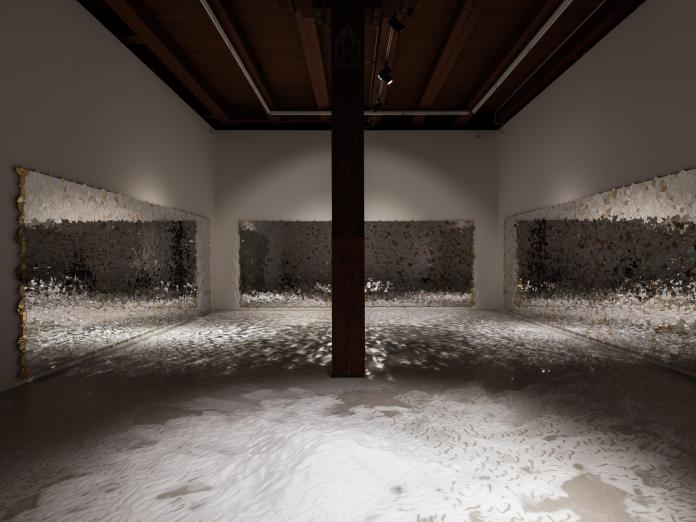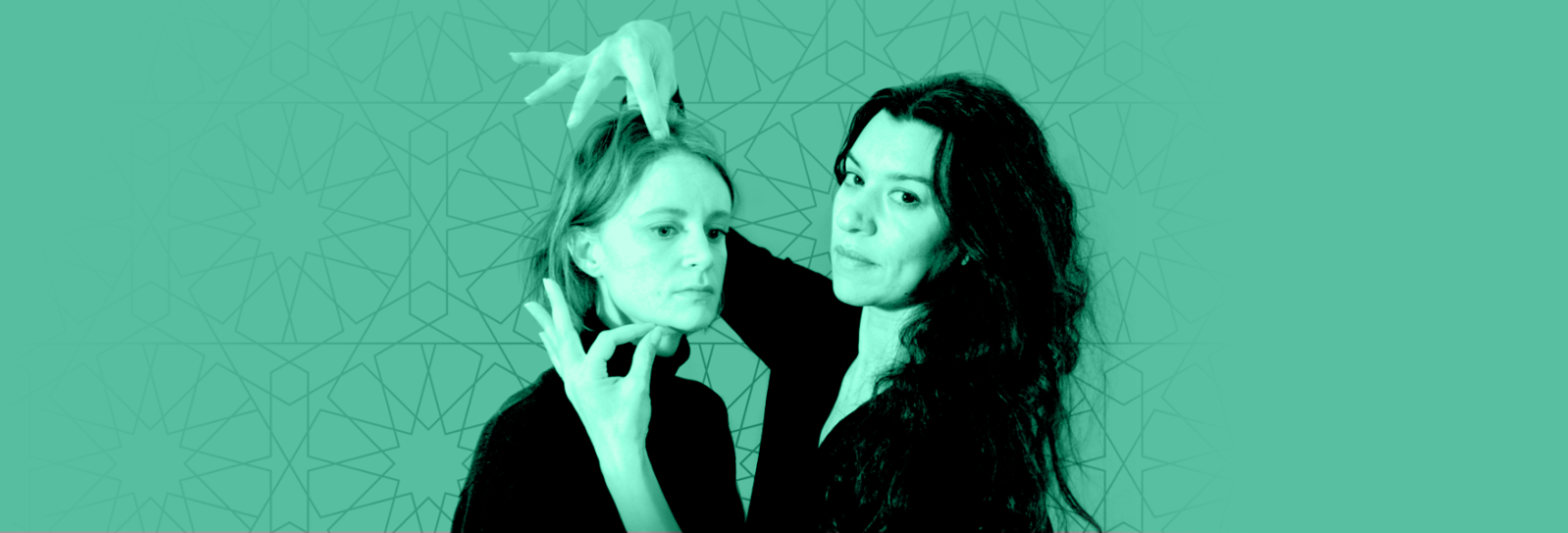Platform - Lina Hashim & Anne Zychalak Stolten
Who am I, if I can’t tell my own story?
Fatema Mernissi
Lina Hashim works with the problems found in colonial and imperial power-hierarchical contexts, including misrepresentation with a focus on generalising Western portrayals of the Muslim woman in captivity. With her solo exhibition "من أنا Who am I?", Hashim takes Nikolaj Kunsthal (and its past as a church) and creates a transformative space through mirror mosaic, calligraphy and gold decoration. Elements that share the common traits that they collide with her cultural background as a Muslim – but also as a woman.
The mirror mosaic has its starting point in decorations from Shiite mosques. A direction within Islam that Hashim carries with her in her surname. The patterns can be traced back to the branch of mathematics called algebra which is concerned with systematics, form and quantity. The patterns are known from central locations within Islam and countries that were formerly Muslim colonies, e.g. India and Spain, where their psychedelic and labyrinthine repetition and size have an immersive and powerful effect on how to lose one self in the sacred.
On the floor, Arabic calligraphy is written in salt. Here are phrases from Muhammad Ibn Muhammad al-Nefzawi’s 16th century erotic textbook, "The Perfumed Garden", which describes Muslim women as tireless and insatiable sex-fixated creatures, constantly hungry for sexual gratification from men. A notion that lived on throughout Western art history in, among other things, the portrayal of the harem women/odalisques painted by male artists such as Ingres, Matisse, Picasso and Delacroix. The portraits were based on the imagination of the artists, as none of them had direct access to the harem women. During the exhibition period, the sentences gradually disappear as the audience walks around in the exhibition.
The body decoration is created from an interest in the phenomenon of beauty and is Hashim’s interpretation and critique of the use of decoration. Because what does beauty do to a woman?
In some Muslim marriage rituals, the bride is adorned with lots of jewellery as a symbol of the woman’s value and beauty. However, there is a duality in the beauty, as the jewellery also becomes a limitation due to its size and weight. This complexity can be reflected in Hashim’s self-understanding because in the creation of her own identity, she is burdened by the roles that are imposed on women with a Muslim cultural background today.
"من أنا Who am I?" is created for confrontation, showdown and transformation, where Hashim challenges her position and the historical genealogy that follows a woman with a Muslim background. She confronts the expectations and exercises of power with which she has been met – both from a Western and an Eastern point of view. A look in the mirror must be met, a new identity must be written, and the jewellery must be mastered anew.
Curation and text by Anne Zychalak Stolten
The exhibition is supported the Danish Arts Foundation and 15. Juni Fonden. The Platform exhibition space has been created with support from Det Obelske Familiefond.
See the complete programme for Platform 2023
Where: Platform
When: 10/2 – 26/3 2023



